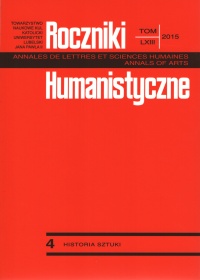From the garden of Hesperides to “Citrus mania” in the gardens of European rulers in XVI-XVIII centuries - the history and symbolic use of citrus plants
Abstract
The history of growing citrus plants dates back to ancient times but in the Renaissance era they gained particular importance as an element of garden art. At that time they became popular for their decorative and symbolic significance, as well as their originally intended purpose.
The first documented use of citrus fruit as “garden art” took place in the garden of the Medici at Castello near Florence. During this period, citrus fruits were identified with the mythical “golden apples” of Hesperides. This fact was used by the Medici family in the garden to create a political message. The great collection of container plants including citrus was also held in Versailles, by French King Louis XIV. From that time the conservatory and orange parterre have become a sig- nifi cant element of garden composition and program.
The Elector of Saxony and the King of Poland - August II the Strong was also a great lover of citrus fruits. Similar to Cosimo I de’ Medici, he identified himself with the mythical Heracles, and in his gardens in Dresden and Warsaw amassed huge collections of those plants - especially the bitter oranges which bear “golden” fruits. The last Polish king, Stanislaw August Poniatowski, was fascinated by citrus cultivation, as was Tsar Alexander II, who repurchased part of August II collection and built a new orangery in Lazienki Park in Warsaw for its maintenance.
References
Alberti L., O Architekturze, tłum. I. Biegańska, [w:] M. Szafrańska, Ogród renesansowy, Zamek Królewski w Warszawie, Warszawa 1998.
Attlee H., Italian Gardens A Cultural History, London Ltd. 2006.
Biblia Tysiąclecia [Księga Przypowieści Salomona, 25.9-11], Wydawnictwo Benedyktynów w Tyńcu, Tyniec 1980.
Burn L., Mity greckie, Warszawa 1999.
Commelin J., Nederlantze hesperides, dat is, Oeffening en gebruik van de limoen-en oranje-boomen; gestelt na den aardt, en climaat der Nederlanden, Amsterdam 1767.
Ferrari G., Hesperides, sive de malorum aureorum cultura et usu Libri Quatuor, Rzym 1646.
Firenzuola G., Wielka sztuka rolnictwa, tłum. J. Mikołajewski, [w:] M. Szafrańska, Ogród renesansowy, Zamek Królewski w Warszawie, Warszawa 1998.
Graves R., Mity greckie, Warszawa 1982.
Hobhouse P., Historia ogrodów, Warszawa 2007.
Impelluso L., Natura i jej symbole, Warszawa 2006.
Impelluso L., Ogrody i labirynty, Warszawa 2009.
Jaskuła A., Dzieje kolekcji drzew cytrusowych z Nieborowa w świetle nowych źródeł, [w:] Nieborów i Arkadia - 70 lat Muzeum. Księga pamiątkowa, Gdańsk 2015, s. 134-145.
Jung C., Archetypy i symbole. Pisma wybrane, Warszawa 1993.
Kerenyi C., Miologia Greków, Warszawa 2002.
Kopaliński W., Słownik mitów i tradycji kultury, Warszawa 2006.
Löffler F., Zwinger drezdeński, tłum. A. Linke, Warszawa 1997.
Mabberley D., A classification for edible Citrus (Rutaceae), „Telopea” 7 (1997), National Herbarium of New South Wales.
Majdecki L., Historia ogrodów, Warszawa 1972.
Owidiusz, Przemiany. Księga I, 89-112, tł. B. Kiciński, t. I, Warszawa 1825.
Pontano G., De hortis Hesperidum, Bazylea 1556.
Puppe R., Barokowe ogrody Saksonii i ich konserwacja, [w:] A. Pieciul, J. Koller-Szumska, S. Wicher (red.), Ogród Branickich w Białymstoku - historia rewaloryzacji. Pałac Branickich w Białymstoku (Parki i ogrody zabytkowe, ochrona i konserwacja), Urząd Miejski w Białymstoku, Białystok 2011, s. 244-260.
Szafrańska M., Ogród renesansowy, Warszawa, 1998.
Siewniak M., Mitkowska A., Tezaurus sztuki ogrodowej, Warszawa 1998.
Sierakowski W., Postać Ogrodów, Która Do Dwóch Zmysłów Smaku W Owocach I Powonienia W Kwiatach Szczególnie Ściąga Się, t. I, Kraków 1798.
Stabryła S. [w:] Mit człowiek literatura, Warszawa 1992.
Szafrańska M., Ogród Zamku Królewskiego w Warszawie, Warszawa 1994.
Śliwa A., Natura ubóstwiona. Przemiany w rośliny w „Metamorfozach” Owidiusza jako temat w sztuce, [w:] Przestrzeń ogrodu przestrzeń kultury, Kraków 2011, s. 163-170.
Winniczuk L., Słownik kultury antycznej, Warszawa 1986.
Volkamer J., Nürnbergische Hesperides Oder Gründliche Beschreibung Der Edlen Citronat-Citronen- und Pomeranzen-Früchte : Wie solche in selbiger und benachbarten Gegend, recht mögen eingesetzt, gewartet, erhalten und fortgebracht werden, Samt Einer ausführlichen Erzehlung der meisten Sorten, welche theils zu Nürnberg würcklich gewachsen, theils von verschiedenen fremden Orten dahin gebracht worden : auf das accurateste in Kupffer gestochen, in Vier Theile eingetheilet und mit [...] Anmerckungen erkläret ; Beneben der Flora, Oder Curiosen Vorstellung verschiedener raren Blumen [...], Wie auch einem Bericht von denen in des Authoris arten stehenden Colvmnis Milliaribvs / Herausgegeben von Johann Christoph Volkamer, Norymberga 1708.
Copyright (c) 2015 Roczniki Humanistyczne

This work is licensed under a Creative Commons Attribution-NonCommercial-NoDerivatives 4.0 International License.





